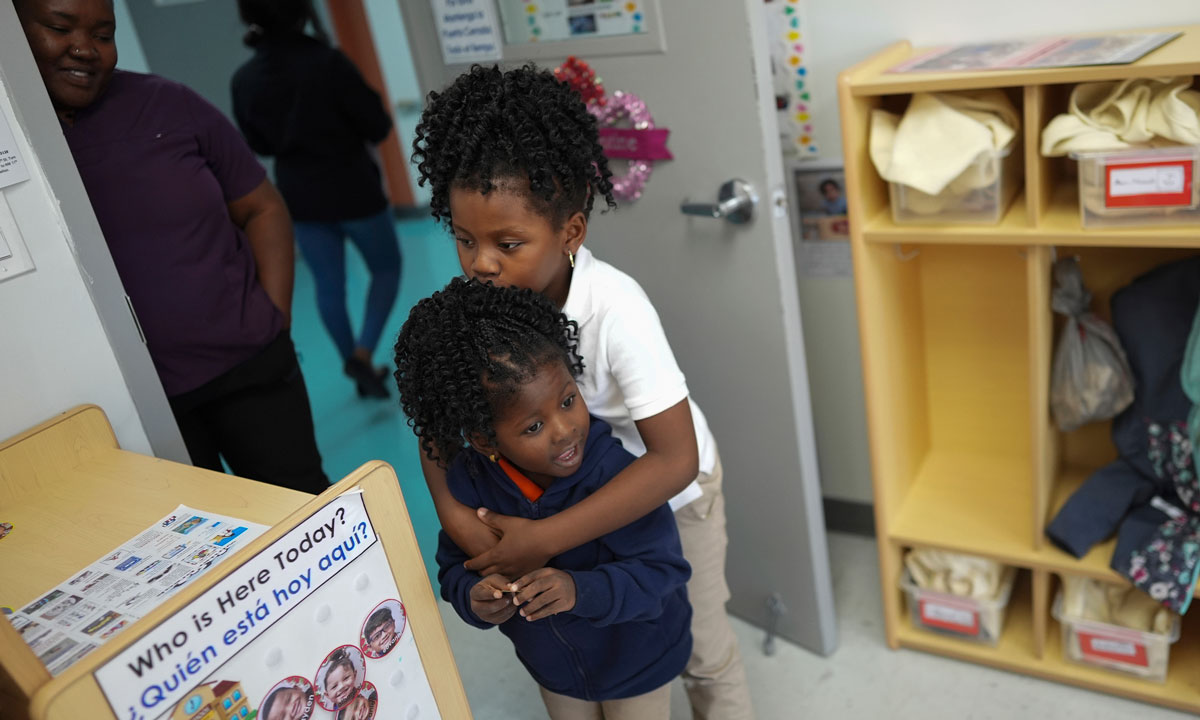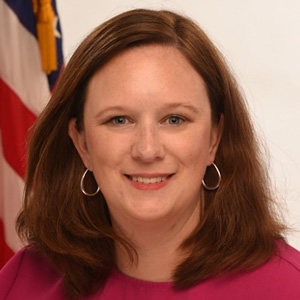Head Start May Have Gotten a Reprieve, but It’s Not Out of the Woods
The Head Start chaos is far from over, says Katie Hamm, but the program's leaders and teachers are committed to continuing to serve families.

Join our zero2eight Substack community for more discussion about the latest news in early care and education. Sign up now.
On any given day, the outreach from Head Start leaders and advocates comes early and often: texts, phone calls, emails, social media messages.
People are scared and confused about communication from the Trump administration, or lack thereof, and they’re seeking guidance about how to navigate the whiplash. Most are worried because their grant funds are delayed or inaccessible — and they’re concerned about what that means for the children, families and staff that rely on federal dollars showing up.
The questions and concerns I field weekly span a number of issues including funding, communications, meeting the needs of children and families and recently, how to contact federal Head Start staff when half the workforce has been cut.
Here are some recent inquiries I received, edited for clarity:
I can’t draw down funds and need to make payroll in two days. My regional office closed. Can someone help me get in touch with the Office of Head Start?
—A Head Start director
My grant funds are three months late. I need to tell parents and staff not to come on Monday if I don’t hear something soon. What should I do?
—A Head Start director
A program’s website has banned words, and they received a monitoring letter. How do I know which words are now prohibited?
—A state Head Start association director
Our grant award finally came, but only half of the funds. Why? Will I have to close in six months?
—A Head Start director
My collective bargaining agreement requires me to give two weeks’ notice before laying off staff and there’s no word on my grant. I know I need to hand out pink slips but I will lose staff if I do. What should I do?
—A Head Start director
The law requires me to serve children with disabilities, but now I’m told training on the Americans with Disabilities Act is prohibited. What do I do to protect children with disabilities?
—A Head Start regional association director
Head Start History
Head Start is a nationwide early childhood development program that serves 800,000 children. Designed by child development experts in the 1960s, the original goal was to provide children in impoverished communities with skills to prepare them for school. At the time, preschool was uncommon: just 4% of children ages 3 to 5 attended preschool. Head Start revolutionized early childhood education, inspiring many states and communities to invest in public preschool programs. Over the past 30 years, the program has evolved to serve low-income families with children 0 to 5 years old. Head Start continues to take a holistic approach to school readiness, offering developmental screenings, nutritious meals and snacks, medical and dental care, and resources to help parents find and maintain employment.
Until Jan. 20 at 11:59 a.m., I was the deputy assistant secretary for early childhood development at the U.S. Department of Health and Human Services (HHS). That’s an unnecessarily long way of saying that a core part of my job was overseeing the Head Start program, so I’ve seen firsthand how the program sets children up for success.
After four years in government, my plan was to spend more time with my own two children and take a break. That lasted about a week. On the morning of Jan. 28, I received a call from a Congressional staffer who was fielding calls from Head Start programs — Head Start funds were frozen — and it was creating chaos. A deluge of frantic calls followed. Program directors were reporting that they could not access funds in the online payment system that allows them to pay their staff, purchase supplies, and pay their bills. Concerned they wouldn’t be able to make ends meet, some site leaders started making plans to close. Teachers panicked about potential layoffs, and staff expressed concern about proposed budget cuts.
Unfortunately, that was only the beginning of the attacks that the Trump administration would launch on Head Start in its first 100 days.
Federal staff responsible for administering the program were fired, leaving the Office of Head Start gutted. Layoffs included the sudden closure of five regional offices around the country that interface with local programs. Grant awards arrived late, after weeks or months of silence. Program leaders went to draw down funds already approved by HHS only to receive DOGE requests to justify their spending. The Administration issued vague guidance prohibiting funds for diversity, equity and inclusion (DEI) initiatives with no explanation as to what that might include. And then, a leaked budget document clearly outlined what many had suspected all along: the Trump administration planned to propose eliminating Head Start.
These actions had immediate impacts. That’s because Head Start uses a federal-to-local funding model, meaning that the federal government awards dollars to community organizations, municipal governments and school districts that run local programs. Since these funds must be used to directly serve children and families, there is no room for error.
In April, for example, a program in Sunnyside, Washington, closed down after months of waiting for federal funds over a month after Congress had approved funds for Head Start. When a program closes, the impact ripples through the community. Children lose access to early learning, nutrition and health care. Parents lose access to child care. Staff go without pay. Local business vendors lose contracts for services like transportation, facility maintenance and food operations.
The Washington program is the starkest example of the detrimental impact the Trump administration is having on Head Start, but the damage doesn’t end there.
Every time I speak with Head Start staff, the stress is palpable. They tell me that they’re living month-to-month, hoping their grants come through, carrying the weight of knowing that they may have to close their doors, and understanding all too well what that will mean for the children they serve. They reach out asking questions like: “Who will take care of the children while their parents are at work if we close?” “Where will the children get their meals?” “How will families navigate health care?” They lament over how difficult it is to calm the fears of staff and parents when they’re feeling anxious themselves. They share fears about not receiving a response to the desperate messages they are sending to a nameless email address at HHS. And they explain how they nervously check headlines during their lunch breaks, eager for news about whether Head Start is officially on the chopping block.
This is not the first time that Head Start has come under threat. While other federal programs designed to address poverty have fallen by the wayside, Head Start has survived regular attempts to target it. My own career began in 2003, when I was an intern at the National Head Start Association while then-President George W. Bush proposed dismantling the program. That effort was stymied by a groundswell of opposition. More than 20 years later, my then-boss Joel Ryan, who leads the Washington State Head Start Association, is the lead plaintiff in a lawsuit against HHS, alleging that the agency is illegally dismantling the program. Once you’re part of the army fighting for Head Start, you don’t leave.
Over the past few months, I’ve seen the grit, determination and commitment of the community ready to fight once again. Head Start is more than a program. It’s a world view that has set the gold standard for early childhood education — one that asserts that parents are their child’s first and most important teachers; that a young child’s physical, cognitive and emotional development are inextricably linked and must be simultaneously supported; and that children with disabilities rightfully belong in classrooms with their peers and with supports to allow them to fully participate.
That world view is critical to Head Start’s durability because it drives people not only to work for the program, but to defend it when it comes under scrutiny.
The people who work at Head Start — from classroom teachers to federal staff — are among the most committed public servants I’ve met throughout my career. They are driven by their belief that the model provides millions of children with opportunities they would not otherwise have. And the research backs it up. Children who attend Head Start have lifelong educational and economic benefits compared to children from similar backgrounds who do not.
It’s that belief that drives teachers and staff to stay, even if it means living with the reality that changes in political headwinds could put their career in jeopardy. It’s why leaders in state Head Start membership associations are working into the wee hours readying an advocacy campaign. It’s why federal staff spent the hours they had after learning they would be terminated desperately trying to transfer their files to someone else to pick up the work before access was cut off.
Every time I speak with Head Start staff, the stress is palpable. They tell me that they’re living month to month, hoping their grants come through, carrying the weight of knowing that they may have to close their doors, and understanding all too well what that will mean for the children they serve.
Head Start endures because it has inspired generations of children, parents, teachers and advocates to commit to keeping the promise of the program for another generation.
Their work might be paying off. More recently, there are signals that the Trump administration could be backing off of their proposal to eliminate Head Start. The so-called “skinny” budget did not propose elimination of the program. After widespread alarm, most programs anticipating grant awards on May 1 received their funds.
Yet, there are constant reminders that Head Start is not yet out of the woods. Some programs inexplicably received only part of their funds. The threat of vague language prohibiting DEI lingers over programs that wonder if they will be the next target. No one knows how the Office of Head Start will continue to administer the program with half of its staff.
This chaos is far from over, but the Head Start community is resilient and ready to fight for a program that has offered millions of children the opportunity for a better life.
Get stories like these delivered straight to your inbox. Sign up for The 74 Newsletter


;)
